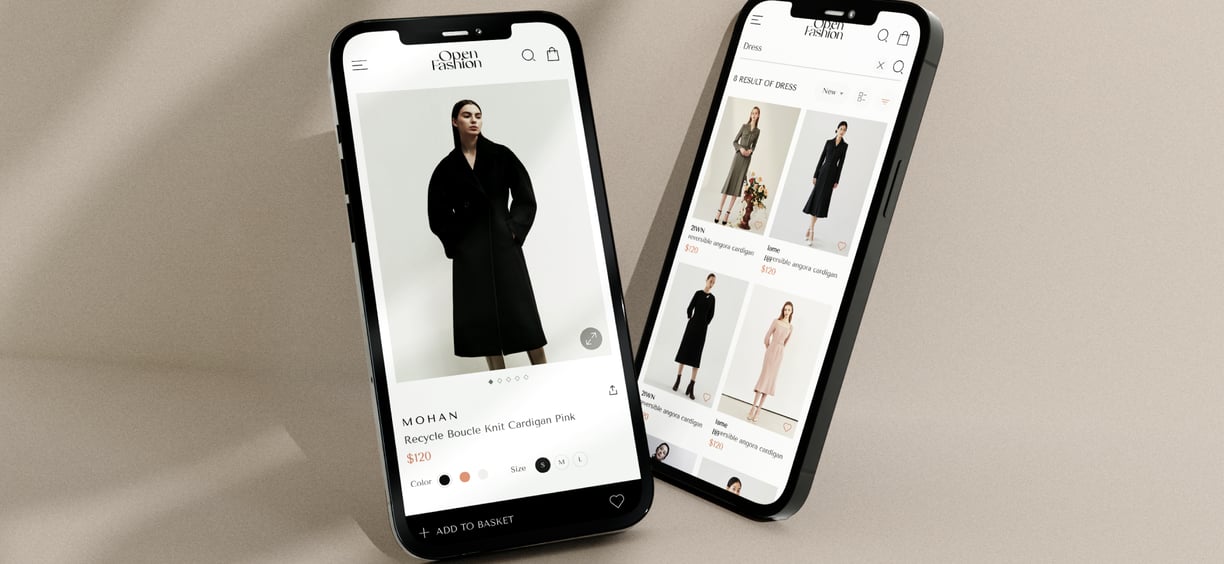This Website is still under maintance So Some Pages Might not Work.
Fashion
Cryptocurrency Education & Investment Guidance App: UX/UI Design Proposal






Project Overview
Goal:
The fashion app aims to revolutionize the shopping and styling experience by integrating AI-driven models, personalized fashion suggestions, and virtual runway features. The app will allow users to explore the latest fashion trends, create outfits, and get AI-powered recommendations on color tones, clothing styles, and accessories based on their body type, preferences, and the latest trends.
Target Audience:
Fashion enthusiasts who want to stay updated with the latest trends.
Shoppers looking for personalized outfit suggestions and virtual try-on experiences.
Brands and fashion retailers interested in showcasing collections using AI-powered virtual models.
Business Goals:
Generate revenue through partnerships with fashion brands and in-app purchases.
Maximize user engagement by offering personalized fashion suggestions.
Provide a unique selling point through AI-driven models and color tone suggestions.
Drive traffic through social sharing features and influencer collaborations.
Current Trends in Fashion Apps:
AI-Driven Personalization:
Fashion apps are increasingly using AI to offer personalized suggestions based on user preferences, previous purchases, and current fashion trends. AI analyzes patterns to suggest outfits, colors, and accessories that match a user’s unique style.Virtual Models and Try-On Features:
Users can visualize how outfits will look on their body using AI-powered virtual models. This gives them the confidence to purchase clothes online without physically trying them on. Virtual runways are also gaining popularity for showcasing collections digitally.Sustainability:
Conscious consumerism is on the rise, and users are looking for fashion apps that support sustainable fashion, including second-hand shopping, eco-friendly materials, and ethical brands.Augmented Reality (AR) Shopping:
AR is becoming a popular tool in fashion apps to let users try on clothes, shoes, and accessories virtually. Combined with AI, AR enhances the shopping experience by helping users visualize products before purchasing.Color Analysis:
AI color analysis tools can scan a user’s skin tone, hair color, and eye color to suggest clothing and accessories in shades that complement them, making this a highly sought-after feature.Fashion Influencers:
Social sharing and influencer-driven fashion recommendations are becoming a key component of fashion apps. Users trust influencers' style choices and often look to them for inspiration.
User Needs:
Personalized Fashion Suggestions:
Users want curated outfit suggestions that reflect their style, size, and current trends.AI-Powered Virtual Models:
Users need virtual models that represent different body types, skin tones, and heights to visualize outfits on themselves or similar body types.Color Coordination Tools:
Users are increasingly seeking tools that help them coordinate outfits based on their skin tone, hair color, and style preferences.Interactive Virtual Runway:
Users want to see the latest collections from brands and designers in a fun, interactive way. AI-powered runways can make this possible without needing in-person fashion shows.Community and Social Features:
Fashion is inherently social, and users expect to share their favorite looks and purchases with friends or influencers on social media.Sustainability Information:
More users are demanding transparency about the sustainability of the fashion items they purchase, including material sources and eco-friendliness.


Design Process Chart
Research & Discovery:
Conduct user interviews and surveys to understand target audience needs.
Analyze competitor apps to identify strengths and gaps.
Define user personas and use cases.
Define & Plan:
Establish project scope, objectives, and deliverables.
Develop information architecture and sitemap.
Create user journey maps to outline user interactions.
Design:
Develop wireframes for key screens and user flows.
Create high-fidelity prototypes incorporating visual design elements.
Conduct usability testing with prototypes to gather feedback.
Development:
Collaborate with developers to implement UI designs.
Ensure design consistency and responsiveness across devices.
Integrate AI functionalities and ensure data security.
Testing & Iteration:
Perform beta testing with real users to identify issues.
Collect feedback and make necessary design adjustments.
Ensure compliance with regulatory standards.
Launch & Maintenance:
Deploy the app to relevant platforms (iOS, Android).
Monitor user engagement and performance metrics.
Continuously update content and features based on user feedback and market trends.


User Flow Chart:
Onboarding Flow:
Sign up/log in → Input preferences and body measurements → AI provides personalized recommendations for clothing and colors.
Personalized Outfit Flow:
Browse AI-suggested outfits → Choose AI model or personal avatar → Virtually try on selected items → Add items to cart or wishlist.
Virtual Runway Flow:
View latest collections on virtual runway → Select an outfit from the runway → Virtual try-on with AR or AI model → Purchase or share on social media.
Smart Closet Flow:
Upload wardrobe items → AI analyzes and suggests new outfits with existing clothes → Mix and match with new items from the store.
Color Tone Flow:
AI scans skin tone and hair color → Suggests color palettes and clothing options → Try on virtually or browse similar items.


Wireframe




HI-FI Prototype
Ideation: App Concept and Features
App Name: Styli.ai
Core Features:
AI-Powered Personal Styling:
AI analyzes user preferences, body type, skin tone, and hair color to recommend outfits, accessories, and color tones. Users can upload their measurements for better accuracy in recommendations.AI Virtual Models & Runway:
Users can select AI models based on their own body shape, height, and skin tone to visualize how different outfits will look on them. The app also has a “Virtual Runway” feature where users can watch AI models walk the runway in the latest collections.Color Tone Analysis:
An AI-based color coordination tool scans the user’s skin tone and hair color and suggests clothing in complementary shades.Smart Closet:
Users can upload photos of their existing wardrobe, and AI will help them create new outfits by mixing and matching their clothes with new, trending items.Virtual Try-On with AR:
Users can use AR technology to virtually try on clothes, shoes, and accessories. The app uses AI to suggest the perfect fit and style based on the user’s body measurements.Sustainable Fashion Insights:
Users can explore sustainable fashion collections and filter items by eco-friendly materials, ethical production, or second-hand options.Influencer-Driven Shopping:
The app features fashion influencers and allows users to shop their curated outfits directly. AI can also recommend influencers with similar style preferences for users to follow.Social Sharing:
Users can share their looks, outfits, or wishlist with friends or on social media platforms directly from the app.Fashion Trend Alerts:
AI-powered fashion trend alerts notify users about the latest styles, colors, and accessories based on their shopping history and preferences.
